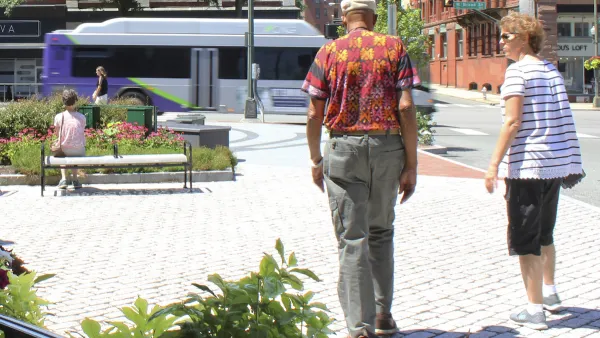Harvard’s voluntary agreement is the first in the nation to legally bind a developer to reducing greenhouse gases beyond the current standards.
Harvard University this week reiterated its long-standing commitment to improving the environment, voluntarily agreeing to limit greenhouse gas emissions from new buildings constructed on its Allston campus in ways that will keep those emissions levels well below current national standards for similar facilities. This commitment begins with the Allston Science Complex, the first project in Harvard's 20-year master plan.
The agreement between the University and the Executive Office of Energy and Environmental Affairs (EEA) ensures that the four-building, 589,000 square-foot Allston Science Complex will produce only half the greenhouse gas emissions of a typical laboratory building already meeting current national standards.
"This is a first," EEA Secretary Ian Bowles said of the University's commitment. "Governor Deval Patrick and I applaud Harvard for its leadership in voluntarily capping greenhouse gas emissions from its Allston campus project," he said. "Harvard's Allston project will now be watched carefully around the country and I expect other institutions and states will step forward and take on similar commitments in the years to come," Bowles added.
Thanks to Jim Barrows
FULL STORY: Harvard University Gazette

Planetizen Federal Action Tracker
A weekly monitor of how Trump’s orders and actions are impacting planners and planning in America.

Vehicle-related Deaths Drop 29% in Richmond, VA
The seventh year of the city's Vision Zero strategy also cut the number of people killed in alcohol-related crashes by half.

As Trump Phases Out FEMA, Is It Time to Flee the Floodplains?
With less federal funding available for disaster relief efforts, the need to relocate at-risk communities is more urgent than ever.

A Case for Universal Rental Assistance
A pair of researchers argues that expanding rental assistance programs for low-income households is the most effective way to alleviate the housing crisis.

Office Conversions Have Increased Every Year This Decade
Since the pandemic, office vacancy rates remain high, leading many cities to adjust zoning codes to accommodate adaptive reuse.

Index Measures Impact of Heat on Pedestrian Activity
When heat and humidity are high, people are more likely to opt for cars when possible.
Urban Design for Planners 1: Software Tools
This six-course series explores essential urban design concepts using open source software and equips planners with the tools they need to participate fully in the urban design process.
Planning for Universal Design
Learn the tools for implementing Universal Design in planning regulations.
JM Goldson LLC
Custer County Colorado
Sarasota County Government
City of Camden Redevelopment Agency
City of Astoria
Transportation Research & Education Center (TREC) at Portland State University
Camden Redevelopment Agency
City of Claremont
Municipality of Princeton (NJ)


























